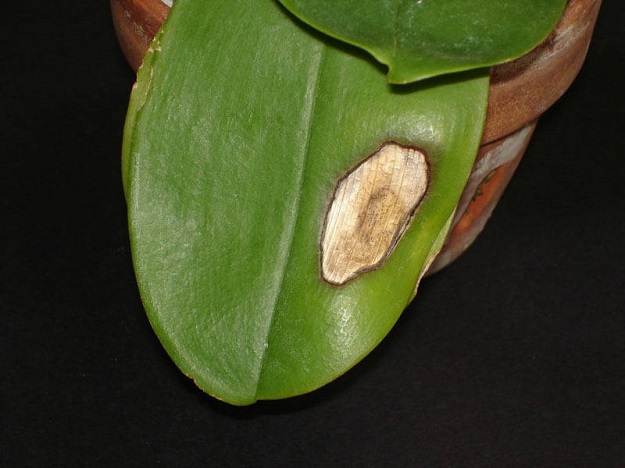
Orchid leaves can help you to diagnose what is wrong with your plant, as this is one of the best ways to see the early signs of potentially fatal diseases. Leaves can be yellow, blackened, or brown or they may become shriveled.
Blackened Leaves
Blackened leaves show their effects on the body or the tip of the leaf. If it is on the body of the plant, it is usually due to the hot sun causing a leave to burn. First try moving the plant away from direct sunlight. If sun burn is not the cause and the size of the spots continue to grow, then it may be a bacterial or fungal disease. Try cutting off the affected part of the leaf and treat it with a fungicide.
Blackened or Brown Tips on the Leaves
Blackened or brown tips on leaves could be caused by excessive minerals in your water. This is common in well water and you should have your water tested. It also could be caused by excessive fertilizing, especially cymbidiums or once again a fungal infection. If the infected area becomes larger, cut it off and treat the plant with a fungicide.
Leaves that are Mottled or Streaked Black or Brown
Leaves that are mottled or streaked black or brown could be suffering from a viral infection. To determine this, special tests are needed, and you will need to send in a leaf to a testing service. As in humans, there is not a way to treat this immediately and you should isolate the infected plant right away.
Yellow Leaves
Yellow leaves are one of the most common ailments. This just could be a natural phenomenon called old age. If it seems to be happening to the oldest leaves don’t worry. On the other hand, it could be from, too much light (most common), not enough nitrogen in the fertilizer or if the medium is primarily bark. Other causes include being subjected to low temperatures or root loss. First change the lighting and potential for low temperatures to see if this solves the problem. Keep in mind that in the North being on a windowsill during winter can be a cold spot.
Small Spots
Another condition that you can see in orchids are small spots that turn from reddish brown to black. These are most likely caused by fungal infection. As orchid growers we need to remember that humidity is needed for proper orchid growth and the orchid supply. Too much humidity favors the growth of fungus.
Shriveling of the Pseudopods
Pseudopods are very efficient water storage areas of the plants. If there is not enough water given to the plants or the humidity is too low the leaves will shrivel. Also, if the root system is dying you can get shriveled pseudopods.
This article was contributed by Orchids-Plus-More.com.
Related Articles & Free Email Newsletter
4 Mistakes to Avoid with Dendrobium Orchids




Comment here